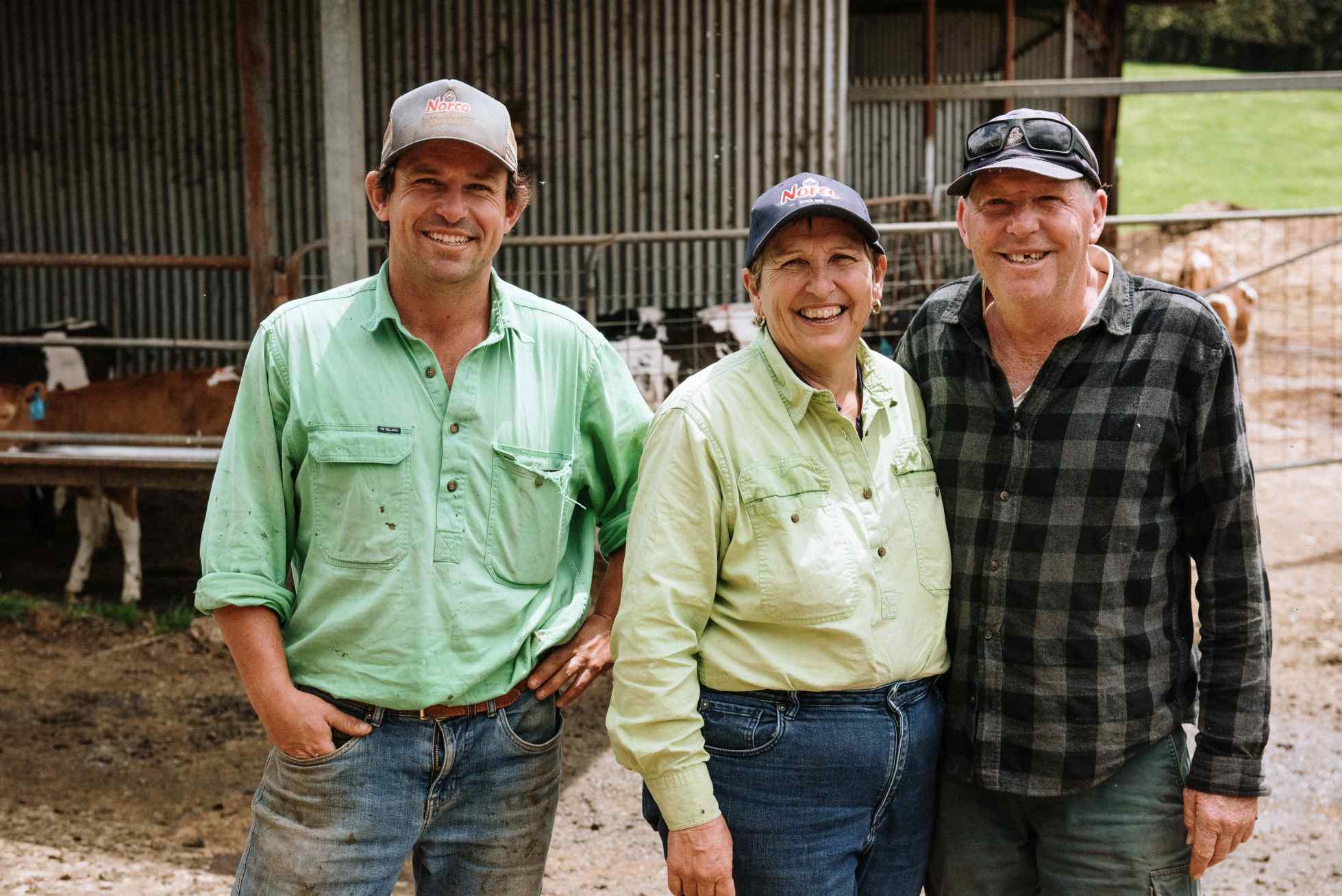Adding “Moore” data to boost breeding values
Dairy farmer: Moore family
Region: Fernbook, NSW
Topic: DataConnect
JULIE Moore always knew data was important for her family’s dairy business.
The NSW farmer keeps meticulous records – health information, calving, joining and everything in between.
This data enabled Julie, her husband Michael and son Stuart to continually develop their registered Fernbook Holstein and Meadowvale Guernsey operations, while boosting production, fertility and type.

The Moore family’s data is being used to improve the accuracy of Australian Breeding Values (ABVs).
But outside of their farmgate at Fernbrook, near Dorrigo in NSW, the Moore’s same detailed herd records play a greater role in improving the accuracy of Australian Breeding Values (ABVs) – everyday.
That’s because the Moore’s – who were already a Ginfo herd, and part of the industry reference population – are one of the first dairy businesses to take part in DataGene’s DataConnect project.
“We thought ‘why not’, we are already gathering the information with our herd’s GEA collars,” Julie explained.
“The industry can get the information every night, from what we’ve fed into the system each day – mating, calvings, health traits, mastitis – anything. It’s just two computers talking to each other, no extra work involved, to improve the stream of information.”
DataConnect is a multiyear project exploring how the industry can work collaboratively with data integration and exchanges, making it easier for farmers to make better data-driven decisions.
The project is exploring how data can be entered once into a pipeline, connected to the industry’s Central Data Repository, and used throughout the industry multiple times.
DataGene is working with individual farmers to connect their systems – initially those using GEA and DeLaval – to enable data exchange with the Central Data Repository.

Stuart Moore and his parents, Julie and Michael.
Julie said the process of connecting was straightforward and quick. “We had a five-minute online meeting with DataGene’s IT person who set things up for us remotely.”
Data from the Moore’s herd management software which also collects their collar data for their 170 head herd is fed into DataGene every night.
Their herd data is added to various sources of data, by DataGene, from Australia and around the world to improve the accuracies of ABVs – enabling farmers to breed for a range of traits with more confidence and create new ABVs.
Julie said contributing their data to the industry continues to payback for their farm business.
“More accurate ABVs, for us, is all about sire selection,” she said.
“We want proven results, we don’t want ‘pie in the sky’ figures. The more accurate ABVs are, the easier it is for us to make decisions.”
The Moore’s breeding objectives include increasing production and improving type – especially udder conformation and body capacity.
Since becoming a Ginfo herd seven years ago and adding genomic testing to their extensive data collection toolkit, which also includes herd recording and classification – the Moores have noticed consistency throughout their herd.
“We are getting higher production, more consistently, and more consistency with our type,” Julie said.
“More of our first-calf heifers are (scoring) 84-85 on their first classification where, before, they were probably only 80. With the better, and more consistent type, we don’t have as many udder conformation faults – as many deep udders – more udders are snug on the cow and this means we are not culling as many second calvers for udder problems. The cows are also more capacious, which means they are eating more grass and producing more milk.”
After three months of working with the GEA collars, Julie said they’d achieved an increase in first mating success which provides a return on their investment through decreased semen costs.
She said the collars inform them how long a cow has been on heat and this has enabled them to better time artificial insemination, compared with traditional heat detection methods.
Julie and her family view record keeping as “essential” for a registered herd, but it also enables them to have an accurate account of what’s happening within their business.
“We’ve been here 22 years, but we collected data – everything from calving to cow treatments – before that, probably for the past 24 years,” she said.
“That information enabled us to notice patterns with certain cow families. We identified a mastitis issue with one family by tracing it through the data.
“That’s the beauty of data – and data collected on computers. As long as the hard drive doesn’t die and you’ve got it backed-up, you can always keep it to refer to.”


